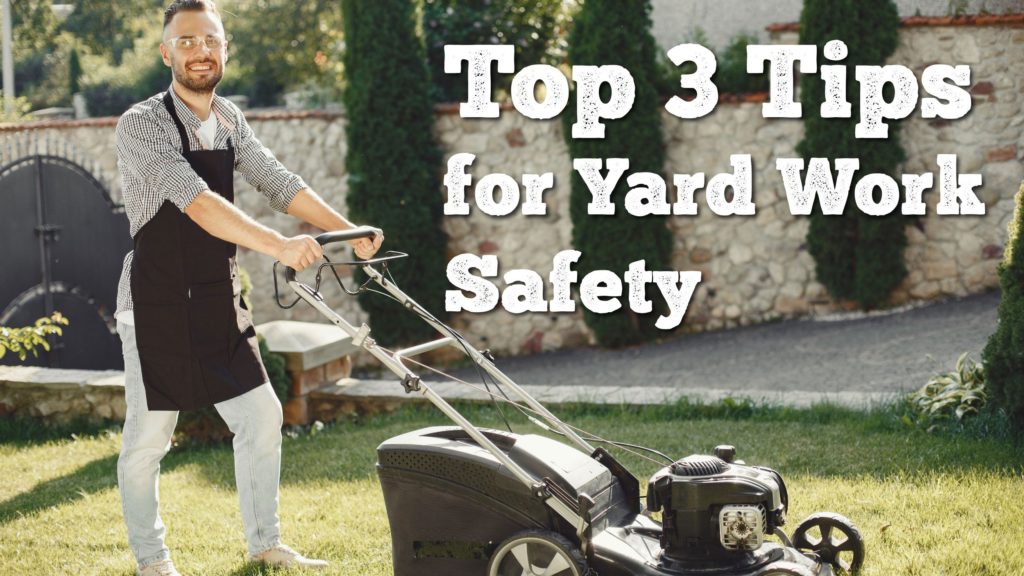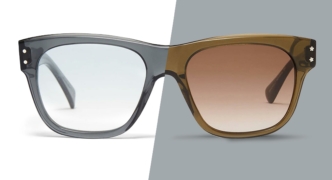Best 3 Ways to Keep Yourself Safe During Yard Work


Owning your house allows you to enjoy the luxury of your own yard. As a first-time homeowner, you’re excited to host parties, eat dinner, and relax in your backyard, and you have lots of plans for fun plants and trees. However, you probably haven’t given too much thought to your yard work responsibilities. Here are the top three safety tips for your weekly and annual yard work jobs.


1. Prepare Your Tools
Instead of diving right into the work, spend some time figuring out what tools you have and what supplies you need to buy. Don’t forget to make a plan for which tools you’re going to use first, and stock up on fuel and replacement parts.
Know Your Equipment
Flip through each tool’s user manual to remember how to properly fuel it and turn it on. If you can’t find your user manual, look for it online. Watch out for special switches that may have gotten messed up during storage and any maintenance requirements. For example, some weed whackers need to have their oil changed before you operate them for the first time each year.
If you’re about to use a tool and your user manual isn’t helping you remember how to operate it, don’t guess. Instead, look up how-to videos on YouTube or ask a friend or family member to show you what to do. It’s always better to delay your yard work than to use a tool in a way that’s unsafe.
Practice Ladder Safety
Using a ladder is necessary when you’re clearing leaves off your roof or trimming high branches. If you don’t know what you’re doing, though, it’s easy for your yard work session to end at the hospital.
Put your ladder on a secure surface, and keep three points of contact with it at all times. This means that you should always have two feet and one hand or two hands and one foot on the ladder. If you need to stand on the highest three rungs to reach something, buy or borrow a new ladder rather than risking your balance.
Check Your Extension Cords
Extension cords help you use your electric equipment all over your yard, but if they’re frayed, it’s easy to start a fire or suffer an electric shock. Inspect all your extension cords for cracking and fraying, and get rid of any that are broken. Avoid repairing frayed extension cords with electrical tape without an expert’s approval.
2. Protect Your Loved Ones
Yard work safety tips aren’t just for you; they also keep your family and pets safe as you work.
Watch Your Children
It’s best to keep your kids inside when you’re doing lawn work, especially if you’re using your lawnmower or other cutters. If your kids are helping you with the work, make sure that they know what they’re doing. Also, ensure that their tasks are age-appropriate; while a fifteen-year-old is fully capable of cutting the grass, your five-year-old shouldn’t do much more than pull weeds and pick up sticks.
Secure Pets
Your pets love to run around outside while you work, but they may not understand your instructions to stay away when you’re working with sharp tools or making branches fall. Put all your pets inside the house, including cats that normally roam outside, and make sure to close the door as you go outside. Whenever you take breaks, be careful that your pets don’t rejoin you as you restart.
Store Tools and Materials Safely
Your tools don’t just pose safety hazards when you’re using them. It’s also easy for your kids and pets to get hurt by your equipment’s sharp blades or to ingest fertilizers, pesticides, and insecticides. Designate an out-of-reach cabinet in your shed or house for your most dangerous equipment, and keep it locked at all times. Include a childproof lock or a padlock for extra security.
3. Work Smart
Now that you’ve ensured that your kids and pets are safe and that your equipment is set, you’re ready to get started. Keep these tips in mind as you start cutting the grass, building your fence, and restructuring your garden.
Don’t Dig Without Approval
You dig holes in your yard for a variety of reasons:
- Creating drainage trenches
- Installing fence posts
- Planting trees
- Building decks
Before starting any of these projects, call 811 and give the operator your address. Find out whether your property contains hazards such as gas lines, water pipes, or cement blocks so that you don’t accidentally hit them. In some cases, you may need to rethink your project to avoid buried obstacles.
Be Conscious of Electricity
It’s easy to forget how dangerous electricity is when you rely on it to power your cutting tools. Avoid plugging too many tools into the same power strip or outlet, and keep track of which tools are connected to power and turned on. To avoid electric shocks, turn all your tools off before unplugging them.
You also must be careful of the electricity caused by nature. Check the forecast before you start working, and stop as soon as you hear thunder. Move all your tools inside, and don’t restart your work until 30 minutes have passed since the last thunderclap or lightning strike. Avoid working in the rain with electric tools even if it’s not thundering because this practice can increase your risk of electric shocks.
Protect Your Body
Yard work is as much of a workout as lifting weights, especially if you’re doing the first session of the season. Before you start, stretch your entire body, including your neck and ankles. Keep your body moving during repetitive chores such as weeding so that your circulation stays active. For stationary chores, try to adjust your position every 10 minutes or alternate between different jobs.
Although it’s tempting to just work through the entire day, you must take regular breaks. Every hour or two, spend a few minutes sitting in the shade to cool down. Drink water at least every half hour, and have a snack when you take your longer breaks. Keep track of how much you’re sweating, especially if it’s not very hot; you don’t want to get so dehydrated that you have to go to the hospital.
Protecting your body also means wearing the right protective gear. Whenever you’re cutting branches or working with sharp tools, put on safety glasses so that you don’t puncture your eyes. When you’re pulling weeds, digging, or raking, wear safety gloves to prevent scratches and blisters. Safety gear may get irritating or hot after a while, but it’s essential to keeping your skin and eyes in top condition.
In addition to this special gear, you also need to pay attention to your clothes. Always wear close-toed shoes, preferably boots, and put on thick socks so that you don’t get blisters. If you’re working with poison ivy or in an area with ticks, wear long sleeves and pants. Add a hat and some sunglasses to avoid sunburns and eye damage from UV radiation overexposure.

FAQs
What Time of Day Should You Work?
In the summer, working in the middle of the day makes you more likely to develop heatstroke and other heat-related conditions. Schedule your yard work sessions in the early morning or evening to keep the temperatures low. Be courteous of your neighbors and respect any neighborhood agreements about when you can run loud equipment.
How Often Should You Service Your Equipment?
Perform maintenance on your lawnmower, trimmers, and other equipment once a year. This annual inspection should happen in the spring, before you turn on your equipment for the first time. That way, you can spot any fuel or exhaust problems before they cause more damage to the equipment or yourself.
How Often Should You Perform Yard Work?
To keep your yard free of rodents and to promote healthy grass growth, mow your lawn once a week during the summer. In the winter, you don’t need to mow it at all unless you have a mild climate. You should also weed your garden once a week. Tasks such as trimming tree branches and sowing grass seed only need to happen once a year.
What Are the Most Common Yard Work Injuries?
Most yard work injuries involve people getting cut on lawnmower blades when they’re replacing or cleaning these sharp tools. Many cuts also result from people not being careful as they operate their lawnmowers. Branch trimmers and other strong cutters are responsible for most of the other injuries, both during cleaning and use.
What Tools Do You Need for Lawn Care?
To keep your lawn in good condition, you need at least a lawnmower, a rake, and a manual branch trimmer. Tools such as a weedwhacker, pruner, leaf blower, and shovel are helpful but not necessary. If you have a particularly big yard, a riding mower may be a good investment. For the equipment you need to implement these safety tips and maintain your yard without accidents, choose Safety Gear Pro‘s collection of goggles and other protective gear.
































